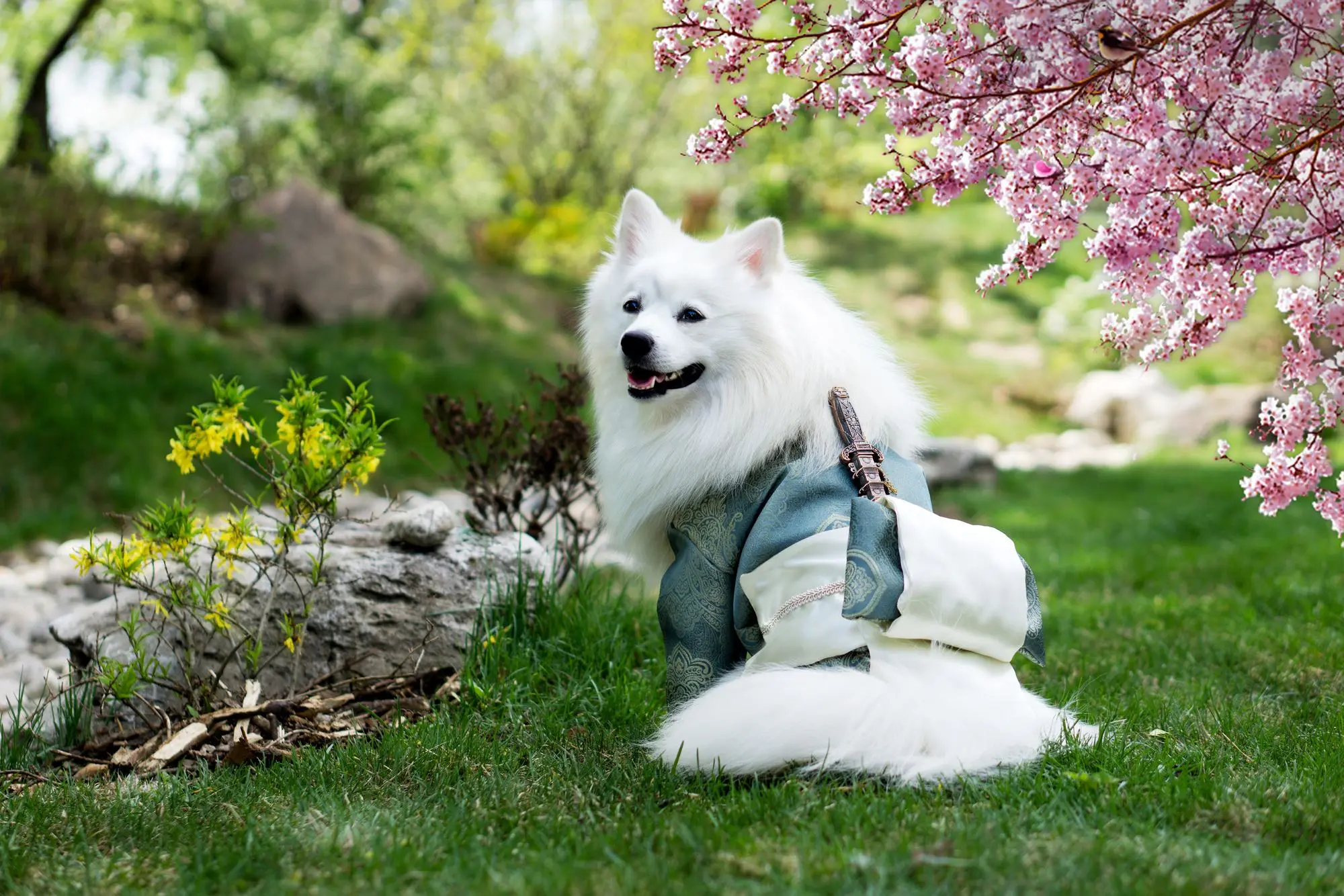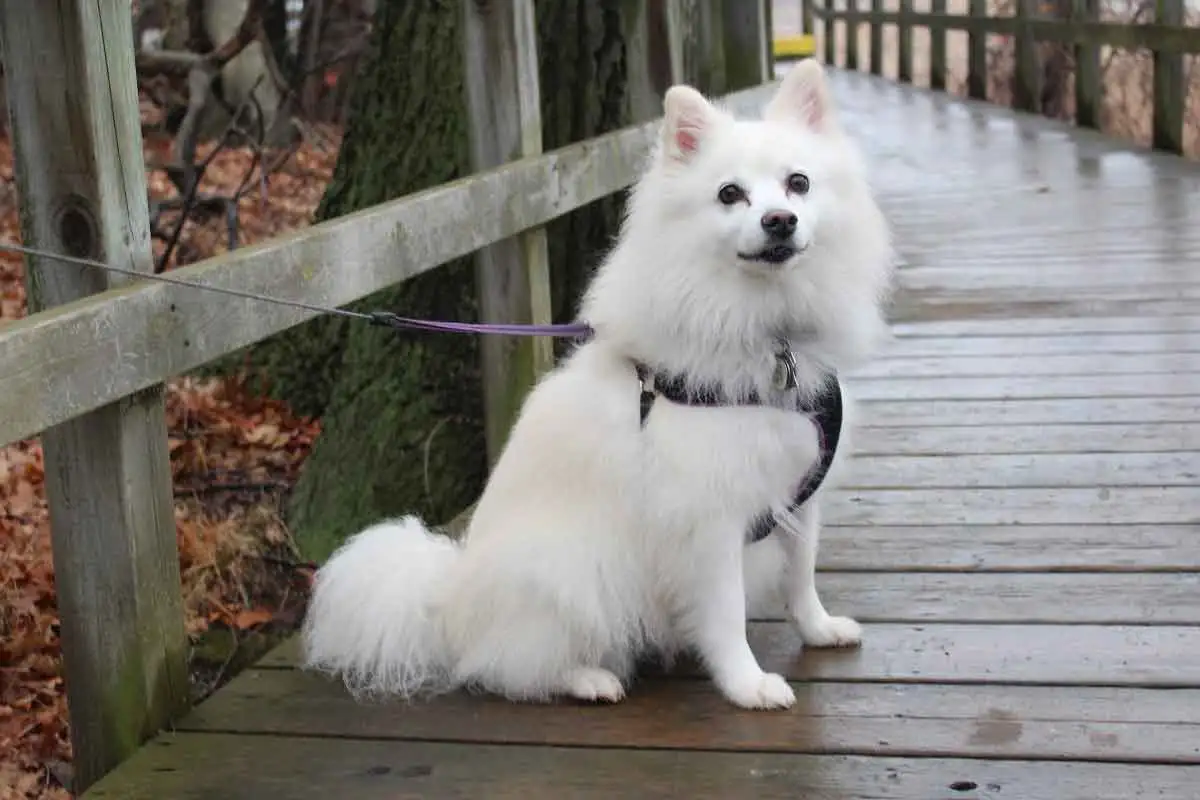The Japanese Spitz is a small, fluffy dog that wins hearts with its charming appearance and friendly personality. They look like little white clouds with soft fur and bright, playful eyes. This breed is perfect for families with children, seniors, and active owners. The Japanese Spitz is always ready to play, go for a walk, or just sit next to you and offer love. If you’re looking for a smart, fun, and loyal companion, the Japanese Spitz might be the perfect choice for you.
History and Appearance of the Japanese Spitz
The Japanese Spitz originated in the 20th century. It is believed that the breed’s ancestors were German Spitz dogs brought to Japan. Over time, the breed was refined to be more compact, with thick white fur and a playful personality.
By the 1950s, the Japanese Spitz had gained worldwide popularity. People love them for their friendly nature, beautiful appearance, and easy maintenance.
Alt: Japanese Spitz feeding
The Japanese Spitz is a small dog with a thick white coat, a fluffy tail, and expressive dark eyes.
- Height: 30-38 cm (12-15 inches)
- Weight: 5-10 kg (11-22 lbs)
- Coat: Long, soft, dense
- Color: Pure white only
Because of their fluffy fur, these dogs appear larger than they actually are. But beneath all that fluff, they have a compact and elegant body.
Japanese Spitz – Personality and Behavior
Japanese Spitz dogs are very friendly, intelligent, and active. They love attention and are always happy to meet new people. Key personality traits:
- Loyal to their owner. These dogs bond closely with their family and may follow you around the house.
- Easy to train. They quickly learn commands and enjoy training sessions.
- Non-aggressive. They get along well with children, other dogs, and even cats.
- Alert. They may bark at strangers but are not aggressive guard dogs.
The Japanese Spitz is an ideal companion. They love playing, walking, and simply being by your side.

Caring for a Japanese Spitz
The Japanese Spitz is not only adorable but also relatively low-maintenance. Despite their thick coat, they are surprisingly easy to care for. Plus, they are naturally clean! They have no doggy odor and even stay relatively tidy in rainy weather.
Many people think that such a fluffy dog sheds all year round. But in reality, they only shed twice a year – in spring and fall.
Coat care:
- Brushing: 2-3 times a week; daily during shedding season.
- Bathing: Once every 2-3 months or as needed.
- Drying: Use a blow dryer after baths to prevent matting.
- No trimming: Their coat naturally protects them from heat and cold.
Important: Their undercoat doesn’t mat if brushed regularly. Their fur is also self-cleaning – even if they get dirty, the dirt will fall off naturally over time.
Other grooming needs:
- Teeth: Prone to plaque, so brush their teeth 2-3 times a week.
- Ears: Check weekly for dirt or signs of infection.
- Eyes: Wipe with a damp cotton pad if tear stains appear.
- Nails: Trim once a month unless they wear down naturally.
Japanese Spitz dogs are generally healthy, but they can be prone to allergies (food or pollen) and tear staining. With proper nutrition and coat care, these issues can be minimized. Even though the Japanese Spitz is a small breed, they are very active! What they need:
- Walks: 2-3 times a day for 30-40 minutes.
- Playtime: They love chasing balls and playing tug-of-war.
- Training: They learn commands and tricks quickly – and they love it!
These dogs hate boredom. They love to play with children. If they don’t get enough attention, they will find their own entertainment – like scattering your slippers all over the house!

Feeding a Japanese Spitz
The Japanese Spitz is an active, intelligent, and easy-to-care-for dog. But to keep them healthy and happy, proper nutrition is essential. What they can eat:
- High-quality dry or wet dog food
- Lean meats (chicken, turkey, beef)
- Fish (boneless)
- Grains (buckwheat, rice)
- Vegetables (carrots, pumpkin, zucchini)
- Dairy (yogurt, cottage cheese)
What to avoid:
- Chocolate, sweets, baked goods
- Bones (especially chicken bones)
- Onions, garlic, grapes
- Fatty, fried, or spicy foods
Feeding schedule:
- Puppies: 4 times a day
- Adults: 2 times a day
Spitz dogs often beg for food, but don’t give in! Overfeeding can lead to obesity and health problems.
Training and Socializing a Japanese Spitz
The Japanese Spitz is very intelligent, so it is easy to train. But like all small dogs, he can be stubborn.
The main rule: training should be fun! Use treats and praise. The first commands are “sit”, “down”, ‘come’, “no”. The puppy will remember them quickly. Do not forget about socialization – introduce him to new people and animals so that he is not afraid of strangers.
The main thing is not to shout or punish the dog. Japanese Spitzes are very sensitive, and rough treatment can make them nervous.
Japanese Spitz Breed Overview – Video
Want to learn more about Japanese Spitz dogs? Check out this detailed breed overview video:
Conclusion
The Japanese Spitz is the perfect dog for anyone looking for a cheerful, friendly, and beautiful companion. They love people, are easy to train, and don’t require complicated grooming. If you’re ready to spend time with them, take them for walks, play, and train them – this fluffy friend will bring you endless joy!
Frequently Asked Questions
Yes! Thanks to their size and temperament, they adapt well to apartment life as long as they get enough exercise.
With proper socialization, they coexist well with other animals in the household.
Yes! They are known for their friendly and patient nature, making them great companions for families with kids.












